Salon Le Mesnil Blanc De Blancs: An Original ‘Unicorn’ Champagne
by Ken Gargett
Should champagne lovers and experts (not always the same thing) from around the globe be asked to name the greatest wines and producers, there would be a unique name that I believe would be on every list: Salon.
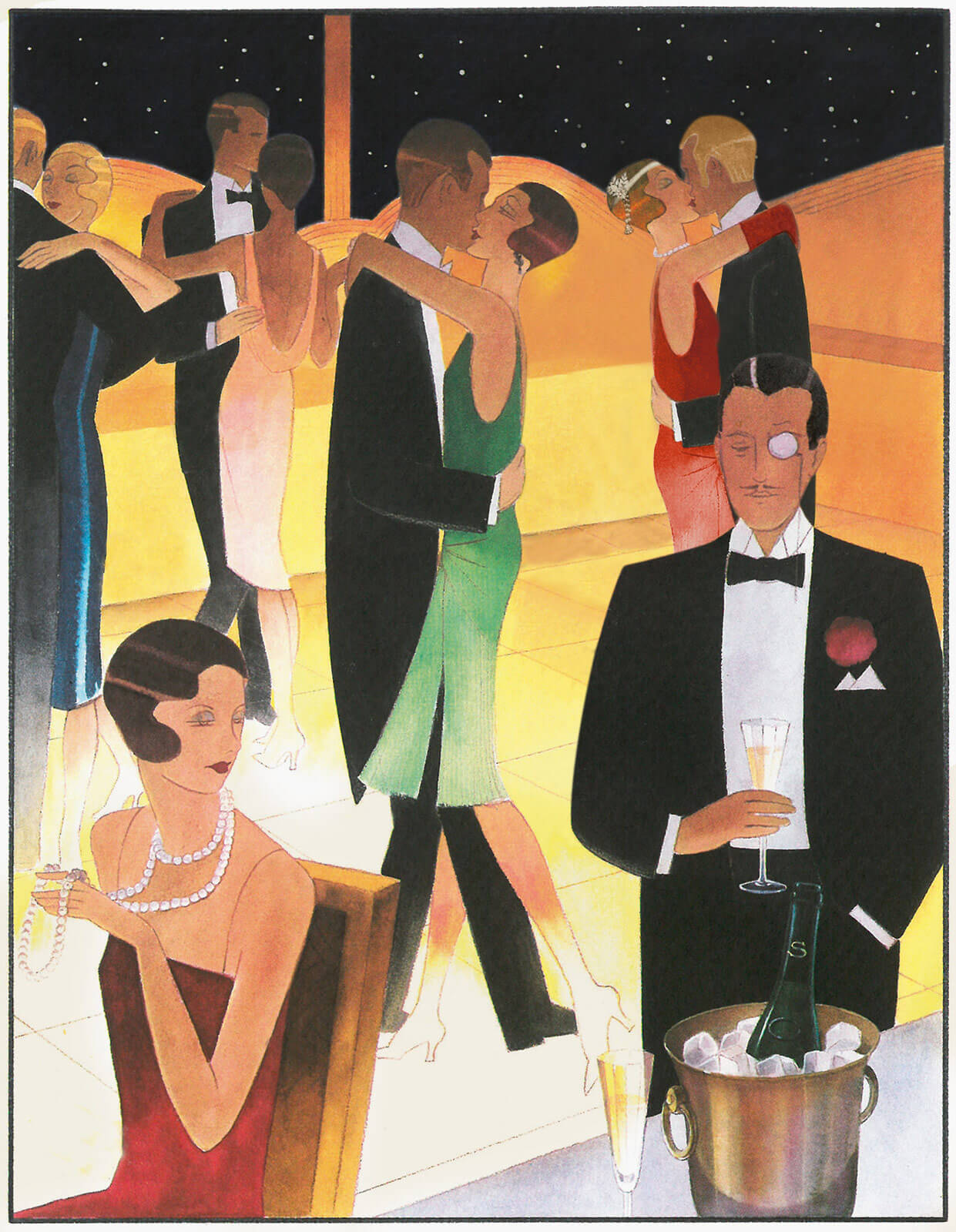
Champagne Salon is one of a kind because this house produces only a single wine: the vintage Le Mesnil Blanc de Blancs. Including the first vintage from the 1905 harvest, Salon has released less than 40 wines. Given that the estimated production for any of these vintages sits around just 60,000 bottles, this is almost the original unicorn champagne. And these days, the price more than reflects that.
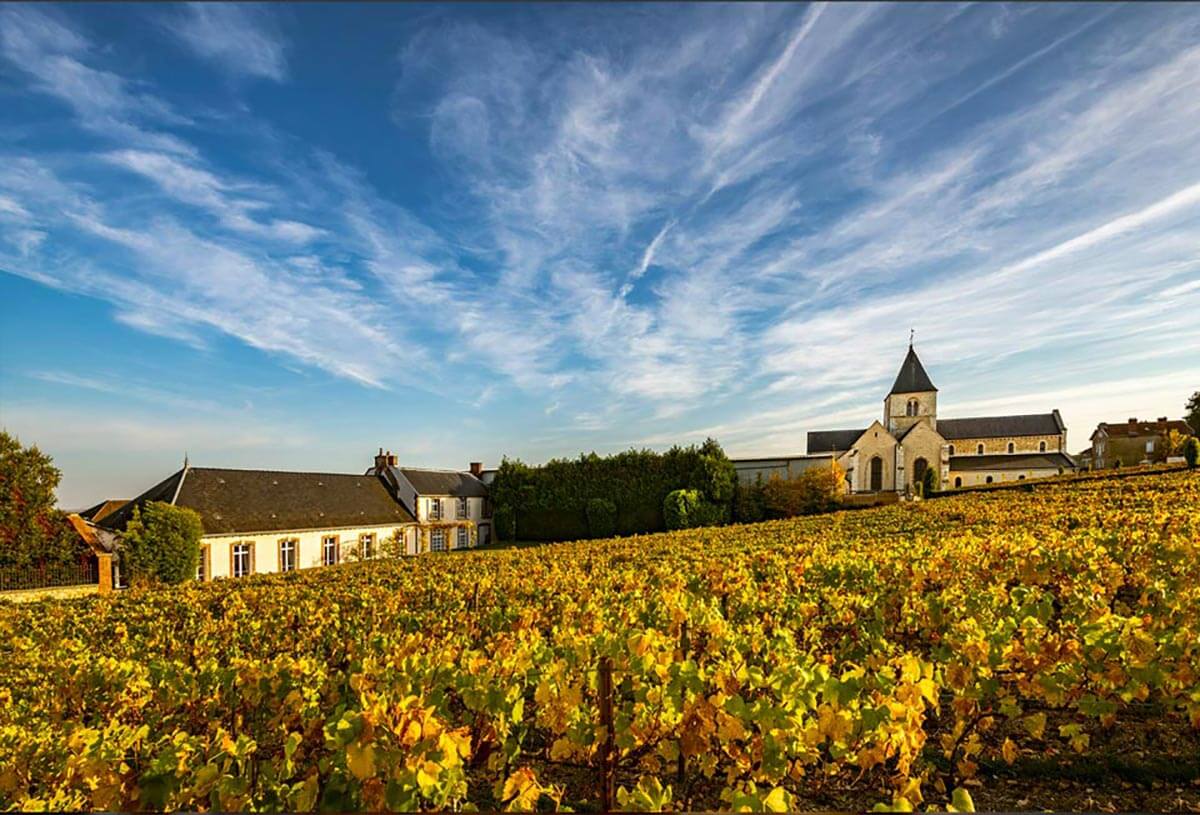
Champagne Salon’s vineyard
I’ve had the good fortune to visit the estate on two occasions, though (unfortunately) not for some time. My second visit was especially memorable. A local chef and I had been doing food and wine presentations throughout Asia and I had to take a detour for a wedding in Monte Carlo (an old friend from the suburbs who had done very nicely for himself).
Having made the long trip to Europe, I was not going to miss the chance to visit a few wineries in Burgundy and Champagne and had made an appointment for Salon (the chef had no intention of being left in a hotel kitchen while I swanned around Europe, so he tagged along – great fun, except for the fact that I learned that chefs have their own relatively flexible time system, whereas I had grown up in a family where punctuality was insisted upon; for me ten minutes early was late, while our friend felt that provided one arrived the same day, that was good enough).
Happily, we arrived at Salon on time – I would have bound and gagged the chef and bundled him into the boot of the car had he looked like being tardy – and walked into an amazing sight. They had prepared a vertical tasting of ten vintages for us, including one or two not yet released.
In truth, I suspect that important people had been there earlier that day and our timing was most fortuitous. Needless to say, it was one of the most exciting tastings of my life and an extraordinary privilege.
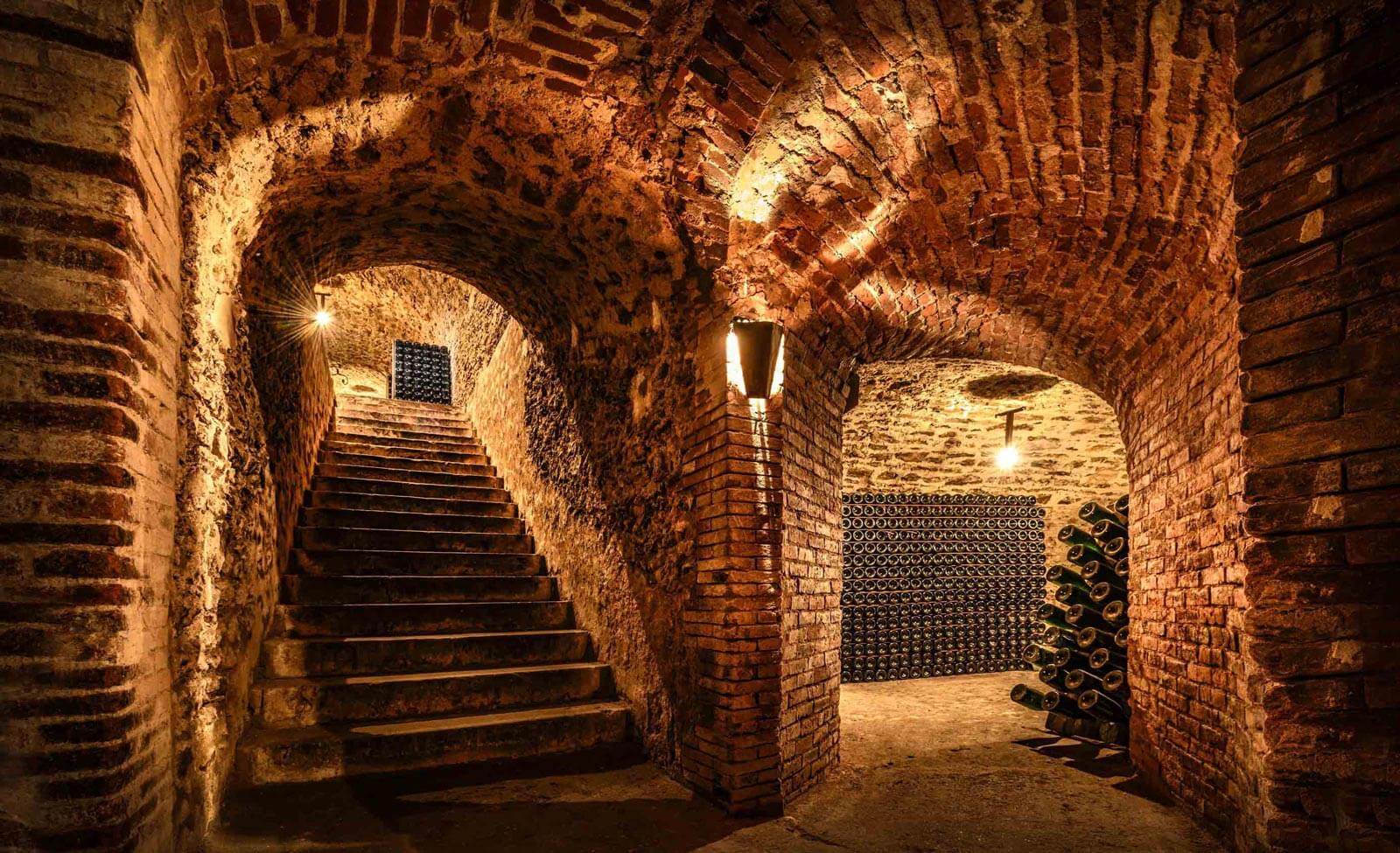
Champagne Salon’s cellar
The rare pleasure of a Salon – and even rarer, the 2008
These days, one rarely encounters a bottle of Salon champagne. They are strictly limited and extremely expensive. The most recent vintage, 2008, was released only in magnums, making them the sort of thing that anyone without the deep pockets of a well-heeled Russian oligarch won’t be going near.
Even worse, there were only 8,000 magnums released and they were not sold by themselves. You had to purchase a “Salon Pack” consisting of the magnum of 2008 and bottles of ’04, ’06, and ’07.
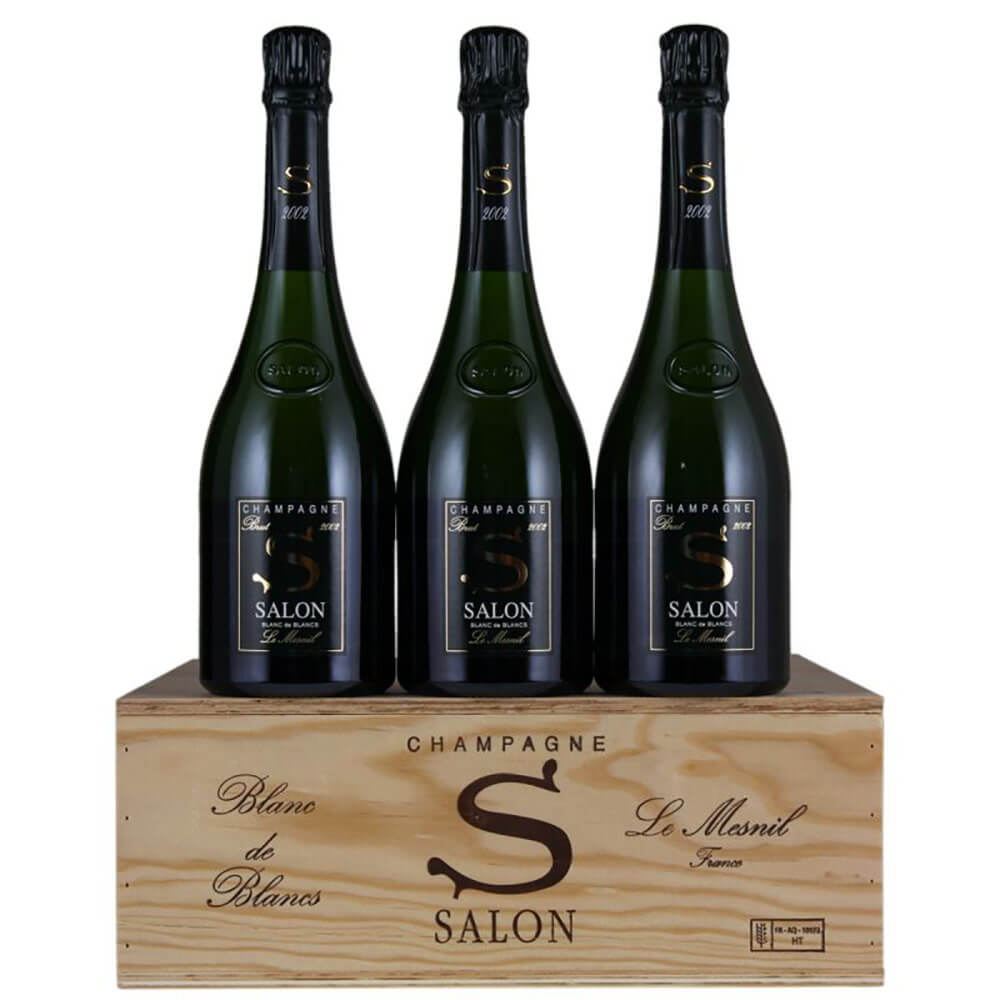
Champagne Salon “Salon Pack”
The cost varies considerably, but a conservative estimate would be around AUD$12,000 to $15,000 for the set. Sadly, I am unable to provide tasting notes, but I have seen 2008 described as possibly the finest champagne ever released. The jury is out on that, but I am sure it is a stupendous wine.
Readers here will know my view of the 2008 vintage – the finest since 1988, perhaps even exceeding it, so we should have every confidence.
Didier Depond, the man in charge, has also declared the 2008 vintage as the greatest in his view, suggesting nothing since has come close (I’m unaware if this comment was made before or after the much-hyped 2018).
To the surprise of many, Salon has already announced that there will be no 2012 – a year many consider one of the best. Salon’s next release will be the 2014, though it seems unlikely that the world will see this wine until (at least) 2025. Krug has also declared that it will not release a 2012 vintage, but the difference is that Krug needed the quality material for its multi-vintage. For Salon, it is simply that the team does not think the 2012 vintage is good enough.
Interestingly, Salon also did not release a 2000, Depond suggesting it “was a marketing vintage, not a real vintage.” There was a time when I would have agreed with him but the more I see of this vintage, the more I see a year that is very much a late-blossoming vintage (not dissimilar to the way 1988 snuck under the radar for many years before revealing its glories).
Wines that failed to raise an eyebrow for me on release are now looking seriously exciting. Hard not to think that perhaps Salon missed an opportunity here.
While I have not tasted the 2008 (or indeed, any Salon subsequent to the 2004), I am able to provide notes on the 1997 (and others; see below) and in magnum, thanks to a friend who kindly brought one along to a Christmas lunch, inspiring this piece.
Nineteen ninety-seven seemed a curious vintage for Salon. It was hardly a unanimous declaration across champagne houses. Louis Roederer released a Cristal, but thanks to its unique resources Roederer doesn’t miss many vintages. Taittinger released Comte, though I don’t think I have ever seen it. Bollinger, in many ways the antithesis of Salon with its Pinot dominance, had a very fine ’97. After that, a smattering.
One argument for the lack of releases for the 1997 vintage is the number of good vintages over the previous decade: 1988, 1989, and 1990 constitute a famous trio; houses dabbled with 1992 and 1993, though neither are truly memorable; 1995 and 1996 were stunning years.
With 1998, 1999, and 2000 all reaching various heights, I suspect many champagne houses made the decision to skip 1997 on grounds not strictly related to the quality of the year. Apparently, you can have too much of a good thing.
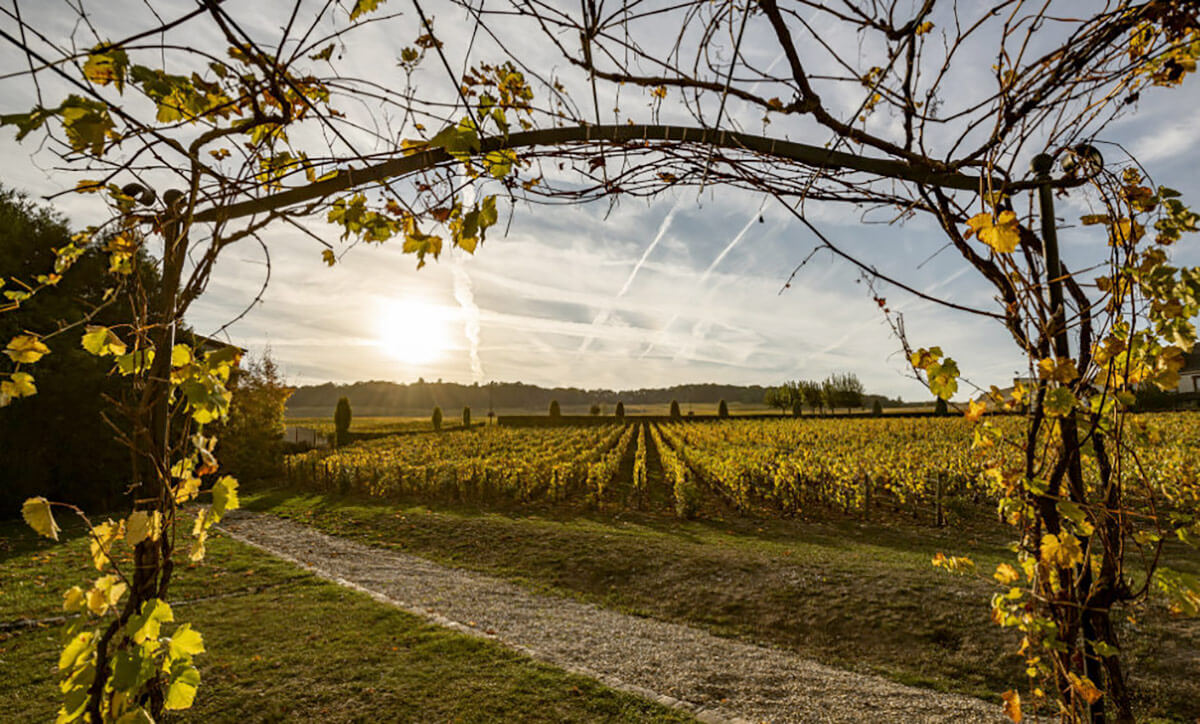
Champagne Salon’s vineyard
Salon champagne: history
In the late 1880s, a Parisian furrier, Eugène-Aimé Salon, born near Le Mesnil-sur-Oger – his father was a “Champenois cart maker” – decided he wanted his own champagne. His brother-in-law was a winemaker for a small house, Clos Tarin, which owned a diminutive walled vineyard known as Clos du Mesnil, today the most famous vineyard in all Champagne and now owned by Krug.
Eugène-Aimé had enjoyed working in the vineyards in his youth and now had the financial resources to realize his dream.
His first champagne was from the 1905 vintage, but it was only for Eugène-Aimé and his family, together with friends and clients. He was so pleased with it that in 1911 he purchased a one-hectare vineyard in Le Mesnil-sur-Oger.
It was not until the 1921 vintage that Salon caved to pressure and released his wine to the public. Other suggestions are that he wanted to age his wine for a suitable time before release and so it was not until 1921 that he felt his 1911 was ready for release, but most authorities suggest that his 1909, 1911, and 1914 as well as the 1905 were reserved strictly for himself and friends.
Since the 1921, the following vintages have been released: 1925, 1928, 1934, 1937, 1943, 1945, 1946, 1947, 1948, 1949, 1951, 1952, 1953, 1955, 1959, 1961, 1964, 1966, 1969, 1971, 1973, 1976, 1979, 1982, 1983, 1985, 1988, 1990, 1995, 1996, 1997, 1999, 2002, 2004, 2006, 2007, and now 2008 in magnum.
The likelihood is that others were releasing single-vineyard champagnes or from a single cru, but if so these have been lost in the mists of time. Salon is now considered to hold the honor of being the first. It is also considered the first true Blanc de Blancs, a wine that is produced only, or practically only, from Chardonnay grapes without the addition of either Pinot Noir or Pinot Meunier grapes.
Back in those days, Chardonnay played second fiddle to Pinot Noir as it was seen as lacking the requisite power and concentration for truly great champagne and there were doubts it could provide the necessary structure. Eugène-Aimé felt that by aging the wine for a longer period, all this would be overcome.
Little has changed over the years at Salon. In the beginning, Eugène-Aimé used 20 vineyards within the Grand Cru of Le Mesnil-sur-Oger to source his Chardonnay. These days, 19 of those same vineyards are still included in the blend.
The only one missing now produces Krug’s Clos du Mesnil, though until after the 1976 vintage Salon also included those grapes – Krug purchased the walled vineyard in 1971, among others, from the Tarin family, who had previously sold the grapes to Salon.
Eugène-Aimé passed away in 1943 and left the house to his sister and nephew, neither of which had much interest – the chef de cave looked after things. In 1963, the family sold to Dubonet-Cinzano via Besserat de Bellefon, and then was part of Pernod-Ricard, although reports suggest that they apparently had no more interest in running it than the sister/nephew (the actual corporate trail gets a bit fuzzy but we get there in the end).
In 1988 (somewhat appropriate given what a stellar vintage it was in Champagne – other sources say 1989, but I like the idea of it being ’88), Laurent-Perrier purchased Salon. That company has always treated it with the great respect it deserves.
Why did Laurent-Perrier purchase Salon? Bizarrely, it might have been thanks to Adolf Hitler.
After World War II, the legendary Bernard de Nonancourt succeeded his mother, Marie-Louise Lanson de Nonancourt, who had purchased Laurent-Perrier in 1939. Under his many decades of stewardship, Laurent-Perrier rose to become the third largest producer in the region. They also owned Lanson.
Bernard’s elder brother, Maurice, was the intended successor to his mother but sadly passed away in a concentration camp’s gas chamber along with a number of other prisoners. I met Bernard very briefly by chance during a visit to Laurent-Perrier several decades ago. We happened to be walking different ways down the same corridor. Brief it was, but he made an impression. Tall, elegant and the consummate gentleman, it was not difficult to see why he was so highly respected in the region.
Bernard de Nonancourt was a famous fighter in the French Resistance (for stories of him and much more, the wonderful Wine and War by Don and Petie Kladstrup is a must read). In the early days of the war, he saw Göring’s soldiers pillaging champagne from the family business, both Laurent-Perrier and other champagnes (including cases of 1928 Salon). Little did he know they were destined for Hitler.
Following his enormous contribution to the war effort he returned to his home and family but still wanted to fight. He gave a lieutenant 100 bottles of champagne in exchange for a position in a tank in his regiment. De Nonancourt was part of the outfit that liberated the Dachau concentration camp. He was also with the forces who first entered Berchtesgaden.
Berchtesgaden, high in the Bavarian Alps, was home to Hitler’s infamous Eagle’s Nest. While there were many “souvenirs” from Hitler’s time there (the soldiers were told to take what they wanted, but that always made Bernard feel uncomfortable), for de Nonancourt the real treasure was the wine cellar.
De Nonancourt was first in. He has described seeing many thousands of bottles and magnums of the world’s great wines: Bordeaux, old cognacs, and champagnes, including those he had seen stolen from his own winery years earlier.
Indeed, as they were about to start “evacuating” the stolen wines by way of an ambulance stretcher, he was handed a case of 1928 Salon, which many claim was the greatest vintage of the century. This was one of the cases that had been owned by the de Nonancourt family (one of a great many cases of this wine held in the Eagle’s Nest, I understand), so he and his fellow soldiers opened a bottle as it was “liberated” to celebrate its return.
De Nonancourt was so enamored of it that he swore that if the house ever came up for sale, he would buy it (quite why that did not happen when it was first available some 25 years earlier is never explained, as far as I am aware, but again, we got there in the end).
Salon is often linked with Delamotte, an old house founded in 1760 that neighbors Salon and with which Salon shares offices and facilities. It is also owned by Laurent-Perrier. Those in the know will often grab Delamotte vintages from any year not declared by Salon as the Salon grapes are then used by Delamotte.
Eugène-Aimé’s success was such that the legendary Parisian restaurant Maxim’s soon made it the house champagne. Indeed, that was the only commercial outlet for Salon until the 1950s (Salon was not exported to the USA until 1983 – today, exports account for 95 percent of the production, going to some 60 countries, a very high percentage to Japan).
For those unfamiliar with Maxim’s, it was perhaps the most famous restaurant on the planet for decades. Regular guests included Edward VIII and Wallis Simpson, Jean Cocteau, Dame Kiri te Kanawa, Brigette Bardot, Maria Callas, and Aristotle Onassis.
In darker times, Hermann Göring and Otto Abetz attended under German occupation as Maxim’s enjoyed protected status. The Germans exempted the place from food restrictions, and its employees were also exempted from deportation.

Champagne Salon’s wine cellar
Salon’s place in Champagne
Salon comes from the Grand Cru of Le Mesnil-sur-Oger in the Côte des Blancs. It is not strictly a single vineyard, coming from 20 possible parcels, including the famed “Salon’s Garden,” the one-hectare Jardin de Salon. This vineyard was fully replanted in 2002 after it was destroyed by disease. It is the only vineyard that Salon actually owns.
This Cru is a diamond in the pantheon of the great sub-regions of Champagne. Not only is it home to Salon, but also Krug’s Clos du Mesnil and Pierre Peters Les Chetillons. The 20 parcels in use today total around 12 hectares, from 8 to 15 different growers (as always with these things, information varies), but Salon’s own team does almost all the viticultural work.
Le Mesnil-sur-Oger sits alongside Le Montrachet in Burgundy (not literally, obviously) as home to the greatest Chardonnay on the planet. At Le Mesnil-sur-Oger, the ancient seabed forming the basis of the terroir gives a steely minerality to the wines. Power, finesse, delicacy, and strength.
It also imparts an extraordinary ability for the wines to age magnificently. The team at Salon has been quoted suggesting that this terroir gives the wines greater acidity and conveys more concentration than is found elsewhere in Champagne – even in other Grand Cru vineyards in the Côte des Blancs.
This is part of the reason that these wines spend so much time on lees and in the cellar before release. That time helps the wines to build richness.
Some authorities suggest that malolactic fermentation is not actively encouraged, but Michel Fauconnet, chef de cave, has gone further and said that it is actively blocked. That, and the lengthy period on lees and in the cellar, is still very much part of the style.
Salon has moved from old casks to stainless steel for fermentation and aging. Dosage is around 5 grams/liter, perhaps a touch more in some vintages (fortunately, Salon has not ventured down the non-dosage path, although a very small number of bottles from 2002 were prepared in that manner so they could be served at a UK restaurant so that diners could compare the two). Only the first press is used. Riddling is by hand.
Salon’s cellars contain bottles from almost every vintage, although it is down to the very last bottle of 1921. As mentioned, only around 60,000 bottles per vintage are available. That sounds like a lot but given that only three to four vintages are released each decade for the entire world, usually with some 10,000 bottles put aside for later release, it soon becomes obvious that Salon really is as rare as the proverbial hen’s teeth.
For example, the Australian allocation of magnums of 2008 was just 24 bottles.
Michel Fauconnet is the chef de cave and the estate is managed by Didier Depond, both having been in their positions for many years.
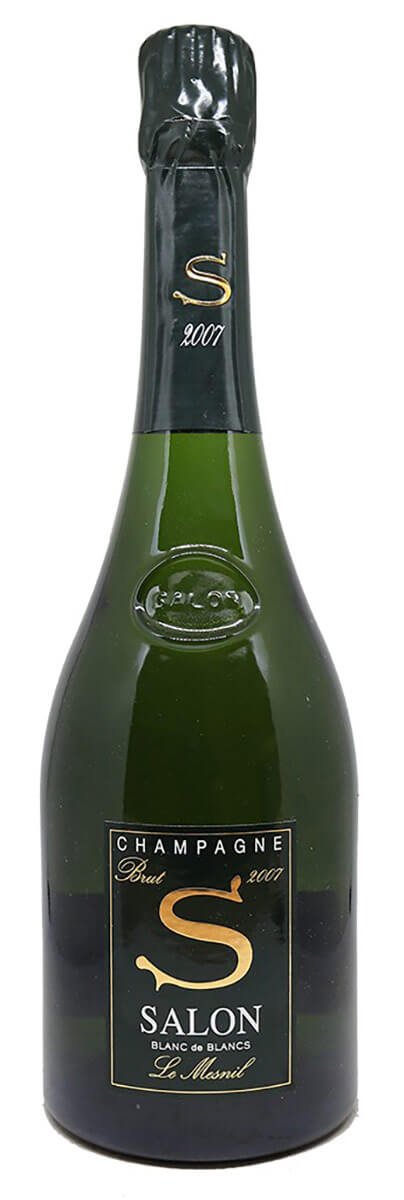
Champagne Salon 2007
Salon champagnes and tasting notes
As noted, I have not seen the most recent vintages (I’d like to add “yet,” but who knows). But to be honest, your chances of getting hold of any 2008 are extremely slim. Salon is a champagne that demands time. Even though it gets such a long period on lees, consumers would be advised to put their precious bottles away for another decade or two – not that I will ever say no if someone is opening a “young” bottle. The high levels of acidity and the precision and structure of the wines mean that they will not show their best until they have had that time.
So, I cannot provide any notes on 2008 or from that amazing tasting at the estate many years ago, but I do have more than my fair share to offer (for which I have no intention of apologizing).
2004: A recent bottle was all walnuts, fig, butterscotch, and lemon blossoms. Wonderfully fresh and criminally young. That trademark vibrancy from the acidity is evident, but everything is immaculately balanced. Supple texture and already serious complexity. Seamless with great length.
Now, 98, but like so many, this will go even higher. Just loved it. If there is a better champagne from 2004, I’m not sure I have seen it (perhaps Krug?).
2002: A wine that already has legendary status; in time, the debate between this, 2008, and 1996 will be fun. It offers a slight baked lemon cheesecake note but is tight, fresh, and with piercing length. Seamless and perfectly balanced. Peaches, ginger, and lemon. Building in richness and will continue to do so. That glorious creamy texture is already in evidence.
Expect honeyed notes in the not-too-distant future. Even a hint of sea breeze and oyster shell. This has decades ahead and a perfect score will surely be achieved in time. A wine of utter precision. For now, it was so, so young that I could only give it a miserly 98.
Keep your hands off this wine for as long as you possibly can (unless it is someone else’s bottle, then it is open slather). Depond has described this as his Audrey Hepburn wine. This is not just one of the finest champagnes from the great 2002 vintage, it is one of the best wines of this century to date.
1997: As mentioned, a very recent magnum. A wine of such extraordinary quality that even the most fizzophobe amongst us could not fail to be converted. Structure, richness, power, and yet a champagne that dances. Ethereal, elegant, delicate, and lingering.
In magnum, this still has a decade or two ahead of it. Fresh and full of both complexity and finesse. White flowers, peaches, glacé lemon, cinnamon, walnuts, and hazelnuts. Creamy texture, impeccable balance. Wonderful.
Nineteen ninety-seven was not widely declared but there were some fine champagnes, none better than this. In magnum, I looked hard for a reason not to give it 100. I could not find one. It is drinking above the reputation of the vintage. 100.
Checking notes, I was surprised at how many times I had seen this vintage of Salon. There were occasions from bottles when, as glorious as it was, it was showing more maturity than some, with more mushroom and truffle notes. Scores ranged, but none lower than 96. Unless you have it in magnum, this is a vintage you can very much enjoy now.
1996: One of those paradox wines that has been utterly stunning since release though drinking it is an act of vinicide if ever there was one. On release, it was being compared to the legendary 1928.
A gloriously complex nose of nuts, citrus, florals, and tobacco leaf. Still tight and fresh. Bright acidity, with grapefruit touches. As one moves through it, nuances of cumquats, dried apricots, white peaches, and honey emerge. This is a truly brilliant champagne but the more time you give it, the better it will look. 99 (and in time surely full marks).
On an even more recent occasion, served blind, I picked it as a 2002 and again gave it 99.
1995: Lemons, grilled nuts, an intense garland of white flowers. Mineral backing with vibrant acidity. Intertwined floral and citrus notes. White peaches and a touch of truffle. Superb balance. A long and very persistent finish. Perhaps more generous than some.
Still youthful although perhaps has settled into a period of gentle progression. A hint of that autolytic toastiness is poking through. Any other time, this wine would be a highlight but in this elite company, it struggles a smidge. Still a fabulous champagne. 95.
1988: I’ve seen a few reports where it was considered that the 1988 from Salon underperforms. Seen a number of others where it has shone as brightly as one would wish from this great year.
My experience has very much fallen in the latter category. Needless to say, we are seeing some maturity now. There are smoked notes, stone fruit, lots of ginger and truffles. Dried figs. This is powerful, extraordinarily long, and has a steel-wire tautness. Perfect balance and even with the richness and structure, there is a gossamer elegance. What a glorious champagne this is. 98.
1985: This has been a favorite vintage for a long while, but it was a very small one. It is also one where Pinot Noir was generally regarded as the star performer, so it was a little surprising to me that they released a Salon. Very glad they did.
This is certainly into a stage where one can drink the wine without guilt from it being too young, which is not to say that well cellared bottles won’t go on from here. Coffee bean, orange rind, spices, figs, truffles, nuts, and parmesan cheese. This is rich, layered, long, and with that wonderful texture. Incredible complexity. 99.
1982: A great year in Champagne and a great wine from Salon. This is still concentrated with notes of citrus, truffles, hazelnuts, coffee beans, mustard seeds, cloves, and other spices. Has fabulous complexity. There is still powerful acidity here and wonderful length. It is actually quite Burgundian. 96.
For more information, please visit www.champagne-salon.fr.
You may also enjoy:
Maxim’s: Dining At The World’s Most Famous Restaurant
Pierre Peters Les Chetillons: One Of The World’s Great Champagnes You’ve Probably Never Heard Of
Leave a Reply
Want to join the discussion?Feel free to contribute!



2 21 2021 Hello Ken Gargett, I enjoyed reading your informative article about my favorite champagne, Salon. I have a fun story and wonderful memory of having three bottles of 1988 Salon during a Thanksgiving dinner. I will collect my thoughts and send an email of the dinner. I still have two bottles of the 1988 Salon patiently waiting for me. Thank you for your post. Stay safe, keep calm, and be well. Virginia
Hi Virginia, many thanks for your comment and I look forward to hearing more. Normally i would be beside myself with jealousy – Salon and 1988 (my favourite vintage), but, and I promise I am not making this up, 15 minutes ago I had a phone call from a friend to see if I could make lunch this Friday as they are opening a 1988 Salon. I swear I am not making that up.
We can compare notes!!